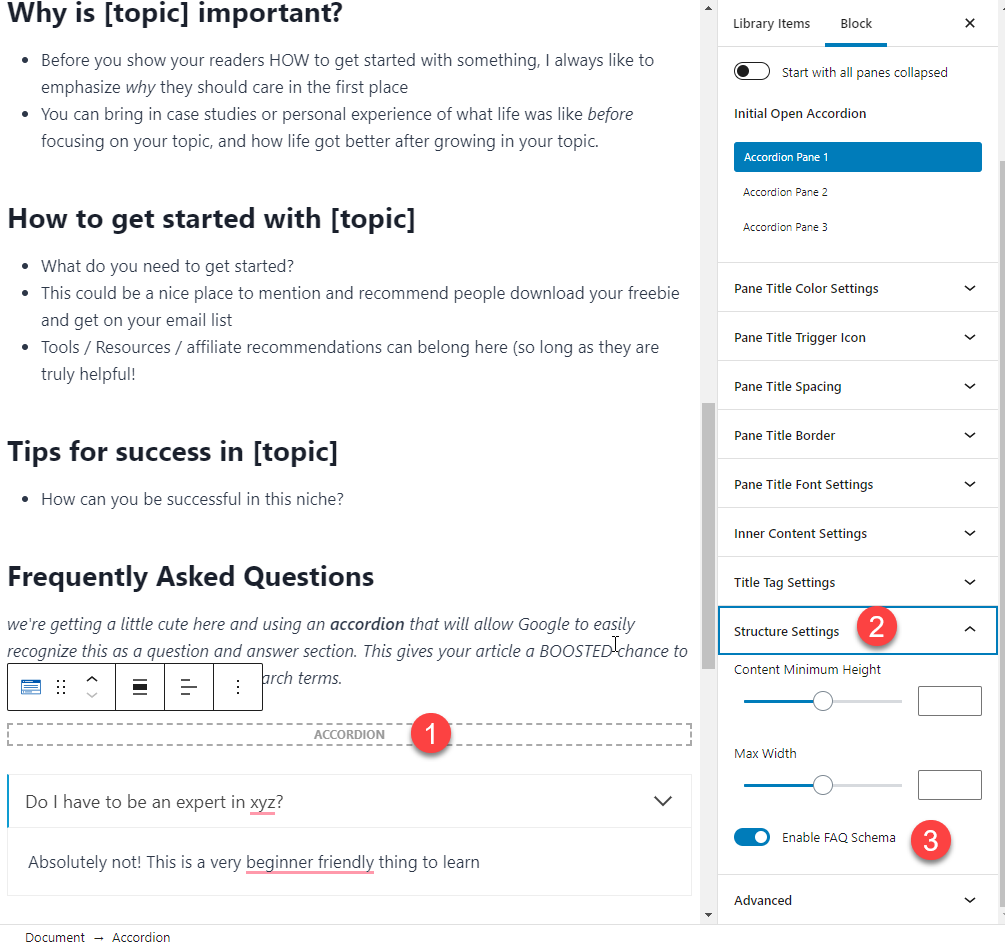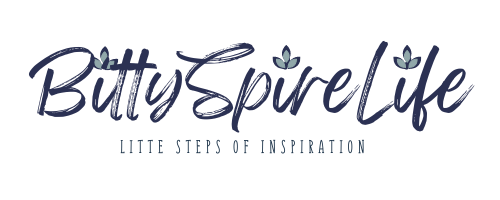Practice 2 Pillar
Tips: This will become one of your pillar posts. You’ll refer to this super-informative post often. At a high level, this post will cover all the basic questions someone has about your niche. As you write more articles, you revisit this post and update it with links to your other articles, and any growth you have to share on the topic.
Example: For example, you may be writing the “Beginner’s Guide to Mom Fitness.” One of the
top questions may be, “How do I find time to workout?” You can give a few quick tips in this
guide, but later, when you write another post about “The 11 Ways to Make Time for Working
Out as a Busy Mom” you can update your Beginner’s Guide and link to the “11 ways” post.
Blog Post Title: The Beginner’s Guide to [topic] < add this to blog post title
Post introduction
- Why is your niche important?
- Can you share a short story (5-7 sentences) about how you’re an authority or how you overcame a struggle with this topic? Make it relatable and don’t try to sound like a world-class expert. People prefer to learn from friends than professors.
This should be a meaty post, so it’s a good idea to add a table of contents element that shows the H2s and possibly H3s (shorter posts can also include the H3s in the table of contents).
What is [topic]?
- Define your niche.
- Clear up common misconceptions.
Why is [topic] important?
- Before you show your readers HOW to get started with something, I always like to emphasize why they should care in the first place
- You can bring in case studies or personal experience of what life was like before focusing on your topic, and how life got better after growing in your topic.
How to get started with [topic]
- What do you need to get started?
- This could be a nice place to mention and recommend people download your freebie and get on your email list
- Tools / Resources / affiliate recommendations can belong here (so long as they are truly helpful!
TIP: If you want to learn more, click here to read my full quide (and then hyper link this text)
More text
More text (as an example for me to practice vertically aligning the light bulb
Tips for success in [topic]
- How can you be successful in this niche?
Frequently Asked Questions
we’re getting a little cute here and using an accordion that will allow Google to easily recognize this as a question and answer section. This gives your article a BOOSTED chance to show up at the top of google for search terms.
If you ever need to set up this FAQ section on your own, you simply:
- add an Accordion Element to the page (from the Kadence Blocks Plugin)
- Select Structure Settings from the block menu
- Turn on the “Enable FAQ Schema” Toggle
Image below showing the steps:

The last thing you need to know about [topic]
- Summarize the post in 1-2 key takeaways
- Call to action for shares/comments/subscribers




